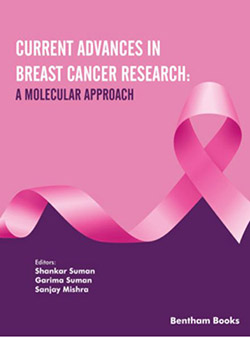Abstract
Breast cancer accounts for a massive and very frequently occurring disease among females throughout the world. In spite of several approaches for the detection of cancer at an early stage and diverse curative strategies that are coming out, the discovery of a potent, efficacious, and unique biomarker is requisite for precise diagnosis at an early stage, as prognostic predictors and as a marker of the development of therapeutic resistance. In the current scenario, the availability of validated breast cancer biomarkers is almost nil. Barely a handful of biomarkers that have a practical advantage in terms of prognosis and diagnosis include estrogen receptor (ER), progesterone receptor (PR), and HER-2 with limitations. Therefore, the urge of precise biomarkers for the detection of breast cancer stands in need. The progress and utilization of proteomic techniques for the discovery of new protein biomarkers have revolutionized the way of understanding the biology and the associated pathways involved in the progression of the disease. With the help of proteomics, now plenty of prospective protein and peptide biomarkers can be identified from the samples using high-throughput analysis. In this chapter, we covered the techniques, which are routinely employed for treatment, diagnosis, and prognosis of breast cancer with all their benefits and drawbacks. It also includes recent advancements in the field of proteomics and their utility in search of new cancer biomarkers.
Keywords: Biomarker, Breast cancer, Differential in-gel electrophoresis, Electrospray ionization, Mammography, Mass spectrometry, Mass-to-charge ratios, Matrix-assisted laser desorption/ionization, Multiple reaction monitoring, Peptide, Proteomics, Surface-enhanced laser desorption/ionization (SALDI).






















